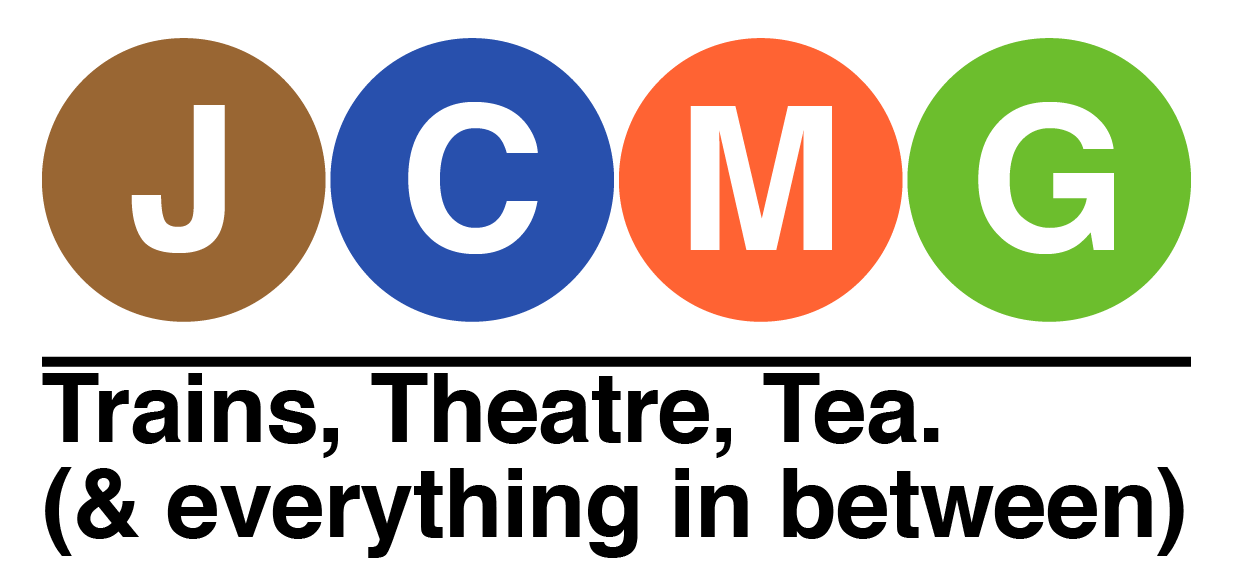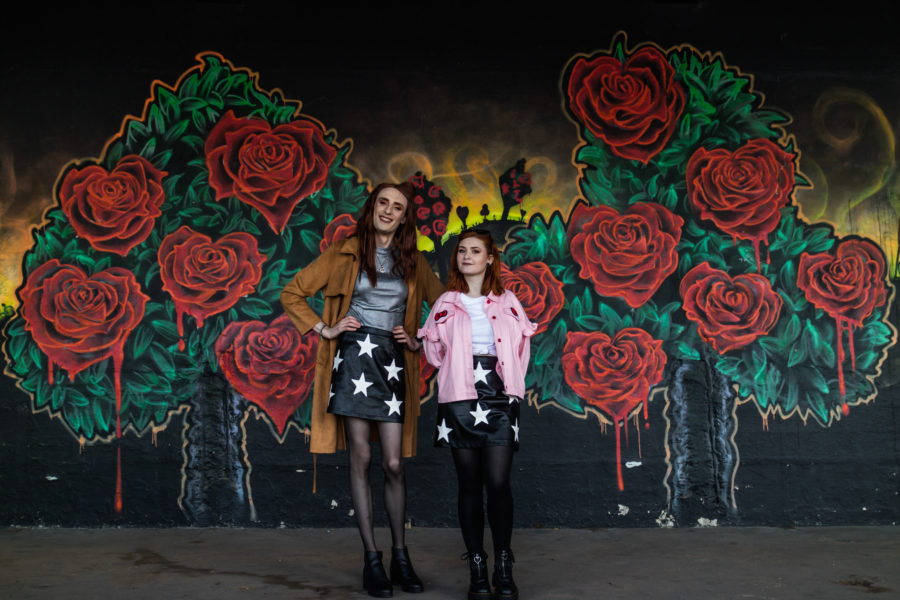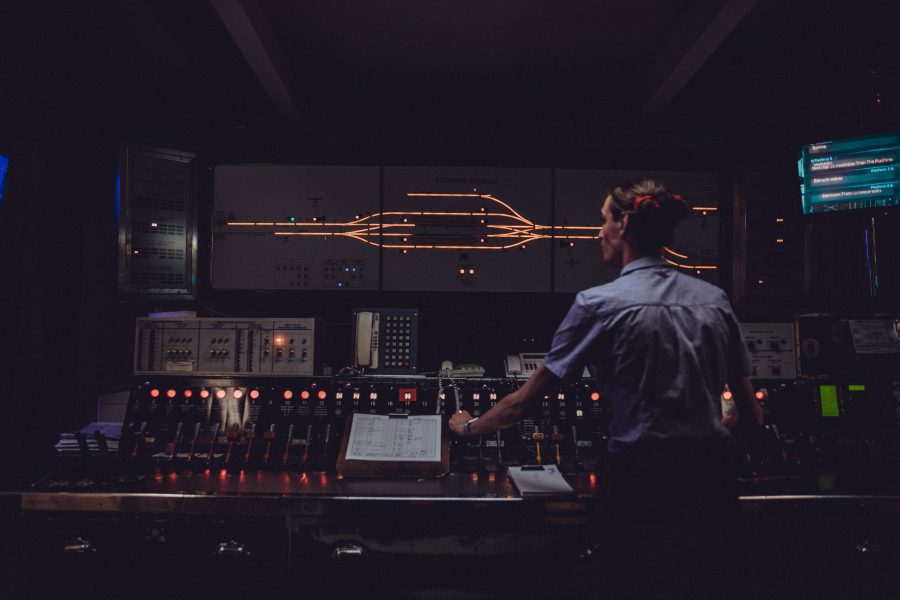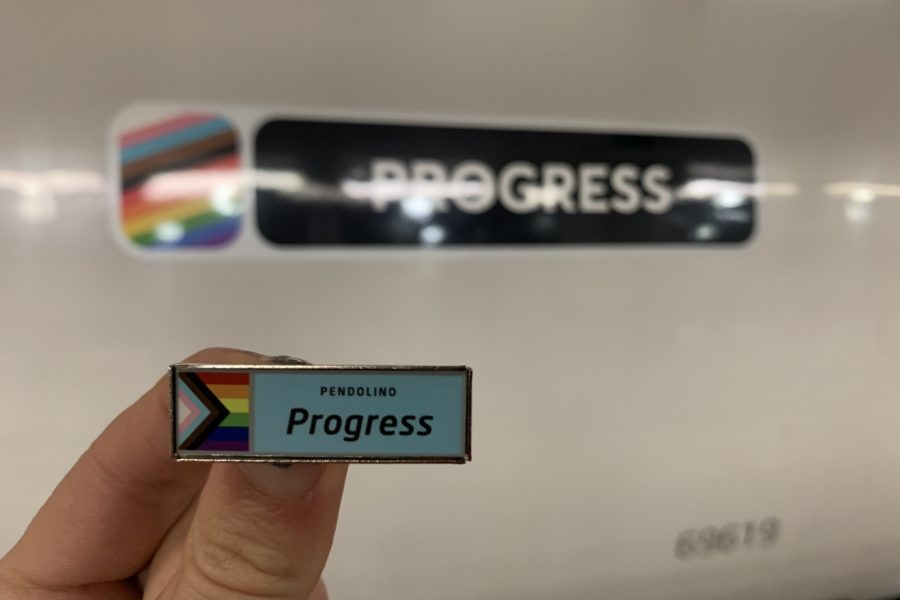This page has been updated to provide a record of the final week of D78 stock trains operating on London Underground, as well as the farewell rail tour. An archive copy of this page, as it appeared on the final day of public operations on April 21st, can be found here.

April 2017 marked the end of an era on London Underground’s District line, as the last of the venerable D78 stock were withdrawn from passenger service. After 37 years of plying their trade between east and west London, the fleet’s time was up, being replaced by the brand new, air-conditioned, walk-through S stock as part of a multi-million pound upgrade programme for the network. The last public service train operated on Friday 21st April, with a final farewell railtour taking place two weeks later, on Sunday 7th May.
Out of 75 individual units only six remained by the final week, formed into three trains. Over the course of the week, each train gradually migrated to Ealing Common depot as services wound down, prior to being dispatched away from the London Underground network. The final service brought down the curtain on over 100 years of conventional, DC-motored rolling stock operation across the sub-surface lines. Like the A60/62 and C69/77 stock before them, the D78s are now nothing more than a memory, replaced by the trains of the future ready to take on the baton of service for the next 30 years.
What was a D78 stock?

The London Underground D78 stock were a family of trains constructed by Metro-Cammell between 1978 and 1981 in their Washwood Heath workshops. An innovative design at the time, the trains were the first on the Underground to use a modern joystick-style control handle, replacing the previous spring-loaded ‘deadman’s’ device found on earlier stocks, as well as a modern ‘train management system’ for the diagnosis and rectification of faults, in preference to an earlier, more generic system. Much progress was also made with ride quality, but the most radical and noticeable difference for passengers were the single-leaf doors, a big departure from anything that had been seen in other rolling stock designs of the era. Ordered at a time of dwindling passenger numbers on the network, the design was intended to both reduce maintenance costs and reflect the lower patronage, but despite being replicated in the later 1983 tube stock the doors would continue to be a drawback for the trains, as passenger numbers rose and station dwell times increased.
However, unlike their smaller cousins, the D78 stock soldiered on, and would undergo a comprehensive midlife overhaul between 2004 and 2008. The unpainted aluminium finish of the trains was swept away, replaced by the striking red, white and blue corporate livery as seen on all other Underground stock by this time. Further innovations would be added to the fleet, with the stock continuing to be a pioneering train for the network. For the first time on any London Underground rolling stock, LED information displays were provided on the side of the trains, as well as a brand new passenger information system inside the train, bringing audiovisual announcements to the sub-surface railway for the first time – although the C69/77 stock had been given audio announcements some years prior, they were still without the internal LED screens provided on the D78s. Other enhancements included the provision of an accessible multi-purpose area, CCTV throughout the trains and a more modern and durable interior. It is in this condition that the trains lasted, until the first was withdrawn in January 2015 as the rollout of the new S stock fleet commenced.
Why were the trains withdrawn?

Simply put, the D78 stock trains no longer met passenger expectations, despite their overhaul less than fifteen years ago. Passenger numbers on the Underground continue to grow year by year, with more capacity being needed to transport people across the length of the city. To ensure that the network is as prepared as possible for any future growth, a brand new fleet of trains – the S stock – was ordered in 2008. At a cost of £1.5billion for 1,395 individual cars, the order is said to be the largest ever single rolling stock order in Britain. The trains feature improved passenger information systems – including the ability to broadcast real-time service updates – as well as larger carriages with walk-through gangways, allowing passengers to spread down inside and use more available space. The standardised fleet operates in two lengths – 8-car S8 stock on the Metropolitan line, and 7-car S7 stock stock on the Circle, District and Hammersmith & City lines.
But it’s not just the trains that need upgrading to ensure that the network is fit for the future: much of the sub-surface railway operates using conventional signalling systems from the 1920s, 1930s and 1950s, which is also coming to the end of its life and is constraining the ability to operate more services across the network. A new, automatic signalling system is to be installed, allowing more trains to run closer together, without the need for line side signals. The veteran D78 stock trains could not be equipped for automatic train operation, and so had to be replaced by the new trains to realise these capacity benefits.
Which D78 stock trains survive?
By the final week, six units of D78 stock remained operational on the network. Each unit was formed of three cars, and units were coupled together to make up trains, creating three six-car rakes from the six units. Five of these units were ‘single-ended’, meaning that they had only one driver’s cab. The sixth unit was the last surviving ‘double-ender’, meaning that it had a cab at both ends, which allowed for greater fleet flexibility when the trains were in squadron service. Even-numbered units faced the west end of the line, whilst those units ending with an odd digit faced east. The six remaining units were thus:
7007 The lowest-numbered train to survive to the final week, 7007 holds the rare honour of carrying the Olympic torch, travelling from Wimbledon to Wimbledon Park with the torch on board as part of the London 2012 Games’ Olympic Torch Rally. The driving car was adorned with the Olympic Rings and special London 2012 slogans, which were carried throughout the Games from 24th July 2012 to early January 2013. Along with 7032, it was part of the last train of D78 stock to operate with passengers on the London Underground network. |
7018 7018 led a somewhat unremarkable life on the Underground, but by the final week was the lowest surviving west end unit. For much of 2017 the unit was paired with 7007 – putting the two lowest numbered units together – but was reformed in early April. Paired with 7057, this unit made its last trip on Thursday 20th April, with decommissioning commencing shortly after the unit stabled at Ealing Common depot. |
7032 As the last of the traditional sub-surface railway rolling stock, the D78s are unique even amongst themselves. Despite standardisation, each unit has its own quirks and foibles, even down to the sound of the traction motors. 7032 was to earn a place in the history books, becoming part of the last train of D78 stock to operate on the London Underground network along with 7007. |
7037 Through a twist of fate, every surviving east end D78 unit ended in the number 7 – some co-incidence! During the final week, 7037 was formed up with the final surviving double-ended unit 7526 – the west end driving cab of which is numbered, you guessed it, 7527. |
7057 By the final week 7057 was the highest numbered surviving single-ended unit, out of a stock that originally numbered to 7129. This train saw out its final days in service alongside 7018, operating for the final time on Thursday 20th April. Starting from Lillie Bridge depot, the train operated during the morning peak, before 7057 led the set into Ealing Common depot to stable for the final time. |
7526/7 As the last surviving double-ended unit, 7526/7 worked its last days in service as the east end unit of a train, meaning that its west-end cab, that is 7527, was buried in the middle of a six-car train. In theory, it is possible to operate a double-ended D78 stock alone, however three cars would lack any meaningful capacity on the network. In the past, however, three-car units of D78 stock did briefly operate on the East London line, to cover for A60/62 stock which was undergoing refurbishment. |
Where did the D78 stock run in the final week?

A handful of D78 stock trains appeared in service on the District line right up to the final day in service. As always with the operational railway, these plans could change at short notice – and they did! Service disruption resulted in a number of curtailments, reformations and diversions – right up to the final public trip – which kept would-be D78 stock hunters on their feet. A final run out in normal passenger carrying service took place on Friday 21st April, with a special farewell charity railtour taking place two weeks later, on Sunday 7th May. There were three D78 stock trains, each made up of two units, remaining in service for the last week in operation, although not all – and, indeed, sometimes none at all – were out on the line simultaneously. Each morning, the allocations for any D78s that made it out onto the line were posted here, all of which are now reproduced for posterity on this website. The six units were formed as shown below, and you can click through to see the workings for each set over the duration of the final week in service.
7032+7007 |
7526+7037 |
7018+7057 |
Rail enthusiasts and Londoners alike headed out onto the network to #CatchTheD for one final time, sharing their photographs and thoughts across social media. Some enthusiasts were kitted out with apparel mimicking the original seating moquette of the old trains, whilst station staff made celebratory announcements to mark the occasion. Commemorative pin badges were available too, raising money for the Poppy Appeal, whilst the London Transport Museum also commissioned a range of merchandise acknowledging the longevity and popularity of the venerable workhorses.
So what did the final train actually do?

The final train that could be ridden with a normal Oyster or contactless card or Travelcard ran on Friday 21st April 2017. The train operated as set 4, starting from Upminster depot and shut tingly back and forth between there and Richmond for the majority of the day, before stabling – for the final time – at Ealing Common depot, shortly after 1830. A defective train at Bromley-by-Bow in the morning looked as though it could scupper the plans for a seamless farewell, causing significant disruption to the District line for much of the day. Fortunately, though, the service control team on the District line were keen to ensure that everyone was able to get their opportunity to ride the final train, keeping it as close to its booked path as possible. They largely succeeded too, with only one alteration – a short trip reversing at Gunnersbury, itself an unusual move – required to keep things running smoothly.
On the final run through to Ealing Broadway from Upminster, passengers were also treated to a rare excursion through a little-used siding at West Ham, also allowing other – emptier – service trains to overtake and provide an important capacity boost for the evening rush hour before the final train continued on its way. Upon reaching Ealing Broadway, the train was ceremoniously waved off by London Underground staff using an old-fashioned green flag, before trundling into the depot at Ealing Common to rapturous applause. The curtain came down on the D78 stock trains after thirty-seven years of service.
7007+7032 – Train 4 – the last train

Film maker Geoff Marshall was on hand to record the events of the day, compiling a short video capturing the emotion and atmosphere experienced by those on board. Also, a small group of enthusiasts – led by rail historian and broadcaster Tim Dunn – joined the train to recreate a photograph taken shortly before the D78 stock trains entered service in 1980. Despite the alterations to the train’s interior since refurbishment, the parallels could easily be seen, assisted by the faux moquette scarves worn by two of the re-enactors. Whilst the original photograph was taken in a sterile depot environment using London Transport staff, the re-creation was taken whilst the train was in service and in motion, causing great interest from the general public on board the train.
What’s this about a railtour? What even is a railtour?
 A railtour is a special trip along a railway line, often organised when trains are being withdrawn for the final time. Such a special occasion took place on Sunday 7th May for the D78 stock. Organised by the London Transport Museum, tickets were strictly limited for the special trip, with the tour selling out well in advance of its operation.
A railtour is a special trip along a railway line, often organised when trains are being withdrawn for the final time. Such a special occasion took place on Sunday 7th May for the D78 stock. Organised by the London Transport Museum, tickets were strictly limited for the special trip, with the tour selling out well in advance of its operation.
The D78 Farewell tour began at High Street Kensington at 0955 and terminated at Ealing Broadway at 1750, with a lunch break at the Piccadilly line station of Northfields. The train covered all of the District line destinations served routinely by the D78 stock – i.e. everywhere but the short section between High Street Kensington and Edgware Road – but unlike some other farewell tours the train did not venture away from District tracks, aside from the short trip to Northfields for lunch.
7007+7032 – Train 755 – the railtour
So that’s it then? No more D78 stock?


Well. Not quite. There may yet be opportunity to ride on the D78 stock again – but it won’t be on London Underground. Vivarail have purchased the majority of the redundant rolling stock, and are refurbishing and upgrading the trains for continued use on the national rail network. Originally marketed as a cheaper alternative to expensive new-build trains, the project has evolved to offer small quantities of high quality, bespoke rolling stock, filling a niche where conventional mainline trains may not be economical. The innovative scheme will see the D78 stock fitted with either an underfloor diesel engine or high capacity battery pack, allowing the units to operate away from electrified tracks. The trains – known as the D-Train or Class 230 – could be a viable solution for little-used rural branch lines, with a number of orders having been placed. The prototype train debuted in passenger service in June 2017, operating a shuttle service to the Rail Live exhibition at Long Marston. The first production trains should enter regular service in December 2018, operating the Bedford to Bletchley line with operator West Midlands Trains.
Two further trains have been retained by London Underground for engineering use. Heavily modified and reformed into permanent five-car formations, the trains will be used during the autumn leaf-fall period to lay a special substance known as ‘sandite’ on the tracks. This improves adhesion between trains and the running rails, lessening the affects of that age-old reason of ‘leaves on the line’. The Rail Adhesion Trains, as they will be known, have replaced an older formation made up of redundant A60/62 stock and will see use on the more rural areas of the Metropolitan line.
One car – 7012 – has also been retained for posterity by the London Transport Museum, and can be seen at its depot at Acton Town during occasional open days. The storage site is a Mecca for transport enthusiasts, with numerous items of redundant London Underground rolling stock – as well as heritage signage, posters, artefacts and more – available for close inspection.
The D78 stock

37 Years of Service ~ 1980-2017
Credits & Acknowledgements:
I am grateful to everyone who has assisted me with the compilation of this page. The information contained within has been drawn from a number of sources, including the ever-informative District Dave’s forum, Richard Griffin’s comprehensive SquareWheels.org.uk and a number of internal London Underground sources.
The downloadable and printable timetable sheets are my own work, with copyright for the design remaining with me. The information contained on each sheet is drawn from the latest District line working timetable, which can be viewed in full on the TfL website. It must – once again – be stressed that all information is subject to change at any time in the best interests of the service, and I cannot be held responsible if the information is inaccurate. You are free to print and distribute these sheets – including online – provided that attribution is maintained.
Photographs on this page have been supplied by a number of fellow enthusiasts, supplemented by some from my own collection. All copyright remains with the original photographer, and no images may be reproduced without the express prior consent from the copyright holder. Where no photographer is attributed, the copyright remains with me. I am indebted to Andy Carter, Tommy Cooling, Jason Cross, Tim Easter, Richard Griffin and Anne Maningas for allowing me to use their photographs.
Finally, additional special thanks goes to Richard Griffin for inspiring this page through his historical pages for the final days of the 1959 stock in January 2000. 17 years on, an archive of those pages can still be found on his website.
Featured image: The original Metropolitan District Railway depot at Lillie Bridge remains in use, once again housing District line trains after spending many years as an engineering depot. Three trains of D78 stock and two trains of S7 stock are seen after dark on the 4th May 2015. The central unit is double-ended train 7526/7, the last to survive in use on the Underground. © Tim Easter





